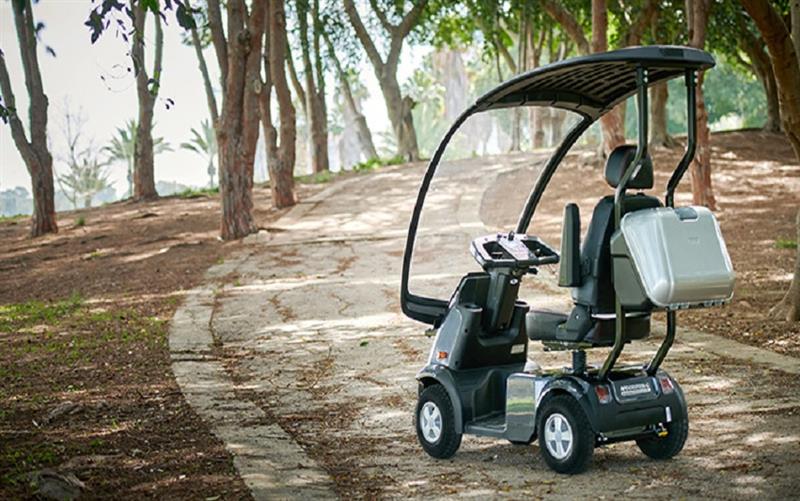
You may be contemplating a tiny mobility scooter for a variety of reasons. When choosing the correct size mobility scooter for you, there are many different considerations to keep in mind, regardless of whether you're seeking for something lightweight or simpler to manoeuvre.
Making an informed selection when buying a mobility scooter needs study, which is why we've compiled five top suggestions to support you when buying tiny mobility scooters.
1. Does the motor have adequate power for you?
It's critical to look into the size of the motor that comes with little mobility scooters. The right size for the various motors available will depend on your daily needs.
requirements. Small mobility scooters have the advantages of being compact and light, but their range of travel is constrained. A 230W motor would be your best pick if you intend to make daily trips within your neighbourhood and go to the stores.
2. Can you quickly disassemble your mobility scooter?
One of the most important features to consider when choosing a tiny mobility scooter is how easy it can be disassembled or folded. More freedom and flexibility will be possible if something is simpler to take apart and put back together. You will be able to store your scooter conveniently and fit it in the trunk of a car if you can disassemble it. You may now travel to locations and become more autonomous thanks to this kind of mobility scooter.
3. Verify your mobility scooter's weight.
Your ability to travel with your mobility scooter may be restricted if it is excessively heavy, in addition to making it difficult for you to lift. On the other side, your mobility scooter can support less passenger weight the lighter it is. The greater the distance you can travel before having to recharge the batteries, the lighter the device is built to be. Think about your weight and the items you want to transport; if you frequently want to carry heavy shopping, for example, be sure the weight load can handle this.
4. Consider your individual needs
It's crucial to consider your own requirements before choosing the tiny mobility scooter you'll buy. It's simple to be influenced by factors like the scooter's appearance, cost, or speed, but you should make sure it checks off all the boxes rather than just one. Think about the storage choices available and whether you'll need more legroom or a certain kind of seat.
5. Think of the many kinds of trips you'll take.
The kind of trips you plan to take on your mobility scooter will have a big impact on your choice of tiny mobility scooter. Find out which ones offer the best range if you plan to drive over longer distances, or which ones are the most nimble if you want to manoeuvre through small areas. Make a note of the trips you will likely do each week and their distances to determine what to watch out for.
6. Size
To provide some background, a variety of scooters are offered with varied dimensions. Scooters, however, are typically divided into five categories: small (which can still be disassembled), medium (which cannot be disassembled), large/off road, and long range.
The Colibri and Leo, with a backrest width of 465mm, drive width of 505mm, length of 1010mm, and turning diameter of 1940/2200mm (3 wheel/4 wheel, respectively), offer the smallest dimensions.
It's critical to understand that the word "small" frequently conveys the impression that we mean "too small," "tight," or "limited space." In this context, we simply mean little because any other size mobility scooter can be too big for the user, the task, or both.
7. What to think about
The scooter must, above all, be comfortable and provide the necessary physical support. A seat that is too wide or deep can induce hunched over sitting. The user's personal sizes, including leg length, back length, hip and shoulder breadth (body measures are also known as anthropometrics), are crucial to know in order to maintain good posture, which is essential for both safety and long-term preservation of health and well-being.
Activity
Purchasing a scooter is typically done to facilitate participation in a social or recreational activity. The user must therefore decide what they are likely to use it for most frequently when considering a tiny mobility scooter.
For instance, if they want to use the scooter for shopping, it must be able to fit through tight spaces like railings or confined aisles.
Environment
The environment is typically the key factor people take into account when choosing a little mobility scooter. This is directly related to activity and involves thinking about the environment in which the work will be carried out and how the size of the scooter will affect that environment's capacity to be carried out safely, independently, and effectively.
One such scenario is the intention to move around the house on an indoor mobility scooter.
The tiny mobility scooter's dimensions must be suitable for the user's body type and size, as well as narrow enough to fit through interior doors, short enough to reach sinks and cabinets, and with a turning diameter/circle small enough to facilitate manoeuvrability.
Accessing social activities is best done with the help of a mobility scooter.
Think about whether the scooter needs to enter a building or store, and if so, how accessible is it. Size must be taken into account along with other critical aspects because some compact mobility scooters (but by no means all) sacrifice a little stability or strength because they are made for urban or flat surface use.
In the end, size can vary depending on the location, and while some scooters are smaller than others in terms of physical measurements, size should really be established by taking into account the user's demands, the activities they are performing, and the surroundings in which the scooter is being used.